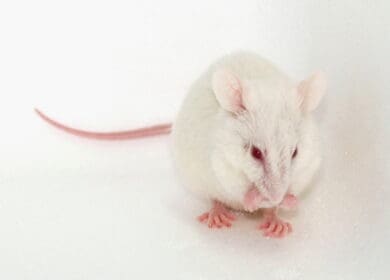NOD/SCID
NOD/SCID
| Strain details | |
|---|---|
| Nomenclature | NOD.CB17-Prkdcscid/Ozarc |
| Common name | NOD scid |
| Synonyms | scid, NOD SCID, Non-Obese Diabetic (NOD) SCID |
| Strain | Mutant Inbred |
| Coat colour | Albino (A/A Tyrc /Tyrc) |
| Species | Mouse |
| Genetic background | Non-Obese Diabetic (NOD) |
| Location | Area Oz1 |
| Weekly wean target | 5 males, 30 females |
Strain description
- MHC haplotype: H2Kg7
- Complement factor: C5 deficient.
- Prkdcscid is autosomal recessive, protein kinase, DNA activated, catalytic polypeptide.
- These mice have no endogenous T- or B- lymphocyte function.
- Develops high incidence of thymoma with age and old mice can develop inclusion body nephropathy.
- Used for the delineation of the role of T cell subsets and auto-antibodies in diabetes.
- Accepts allogeneic and xenogeneic grafts making this strain an ideal model for cell transfer experiments.
- scid mice housed in an isolator.
- The NOD scid spontaneous mutant model was developed by the Fox Chase Cancer Center by transferring the scid mutation from a C.B-17 congenic background to a diabetes-susceptible non-obese diabetic background.
- Animal Resource Centre (ARC) Australia animals are from colonies held at Walter and Eliza Hall Institute December 1998. Caesarean sectioned to SPF status 1999, genetically verified and flexible film isolator reared 1999. This colony has remained at the 6th backcross since its arrival in 1998.
- This strain is transferred to Ozgene ARC in 2023.
- The multiple defects in immunity unique to this model provide an excellent system for reconstitution with human hematopoietic cells, resulting in exceptional models for HIV-1 research and gene therapy.
- Useful model for cancer research into increased tumour incidence, particularly lymphomas and thymic tumours.
Past ARC and transfer reports:
Current Ozgene ARC reports (from 01-Jun-2023)
- This strain is housed in Area Oz1
- Please see Oz1 health reports on our Biosecurity page
- Animals are not allowed to be used for propagation.
- Ozgene ARC terms and Conditions
- Mouse images are representative only. Actual phenotypes may vary based on
genotype, sex, age, husbandry, health status, and other factors.


